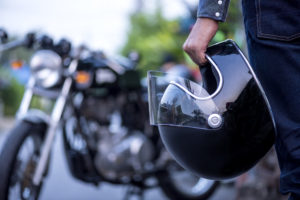Although it may be hard to believe given the weather on any given day recently, summer is right around the corner. Given that, matters of summer heat should be on your mind. Children and the elderly are very susceptible to the dangers of the extreme heat that summers can bring – according to the Centers for Disease Control, an average of 300 people a year die from heat related illnesses. The three main heat illnesses, in order of increasing severity, are heat cramps, heat exhaustion and heat stroke.
Heat cramps are the easiest to deal with. It is believed that heat cramps are caused by a drop in muscle sodium levels and are characterized by muscle spasms or pain. If you suspect that you or someone you are with are experiencing heat cramps, the following are some tips on what to do:
- Stop all activity and find a cool place to rest.
- Do not resume any strenuous activity for a few hours, even if the cramps subside. Doing this can lead to heat exhaustion or heat stroke.
- Drink clear liquids such as juices or a sports beverages.
- Stretch and massage the affected area.
- Find medical attention if the cramps do not subside in one hour or if the person has heart problems or is on a low-sodium diet.
Heat exhaustion results from dehydration and ongoing exposure to high temperatures. Symptoms include pale pallor, nausea or vomiting, fast and shallow breathing, fast and weak pulse, heavy sweating, muscle cramps, cool and damp or moist skin and dizziness, fainting or headaches. If you suspect heat exhaustion, here is what you should do:
- Move the person to a cool place for rest.
- Have the person sip half a glass of cool water every 15 minutes.
- Loosen clothing and apply cool damp clothes to the skin.
- Immediately find medical attention if the symptoms are sever or worsen, or if the victim has high blood pressure or heart problems.
- Monitor the individual for any changes in his condition.
Heat stroke is the most serious condition caused by excessive heat exposure. It can be life threatening and is caused by the inability of one’s body to regulate its temperature. Symptoms include nausea, confusion, unconsciousness, rapid and strong pulse, dizziness, pounding headache and red, hot and dry skin that lacks sweating. If you suspect heat stroke, immediately find medical assistance but until you can do so, do the following:
- Find a cool, shady area for rest.
- Do not consume or provide any fluids.
- Rapidly cool the body temperature with whatever is available such a tub of water, a cool shower, hosing with cool water, fanning the body or wrapping in a cool, wet sheet.
- Keep track body temperature and cool the person until body temperature is down to 101-102 ° F.
Of course, the best course is always prevention rather than treatment. So when it is extremely hot, do not to spend long periods of time outdoors during the hottest hours of the day – 4:00 p.m. is typically the warmest time of the day. Stay hydrated by drinking lots of water or other clear fluids and wear breathable clothing. Finally, stay in the shade when possible but always remember no matter where you are, protect yourself from sunburn with sunscreen.

Bret Hanna of Wrona DuBois in Utah, focuses exclusively on litigating plaintiffs’ medical malpractice and catastrophic personal injury cases. He has represented clients in state and federal courts, in mediations, and in administrative proceedings in Michigan and Utah since 1991.










Comments for this article are closed.